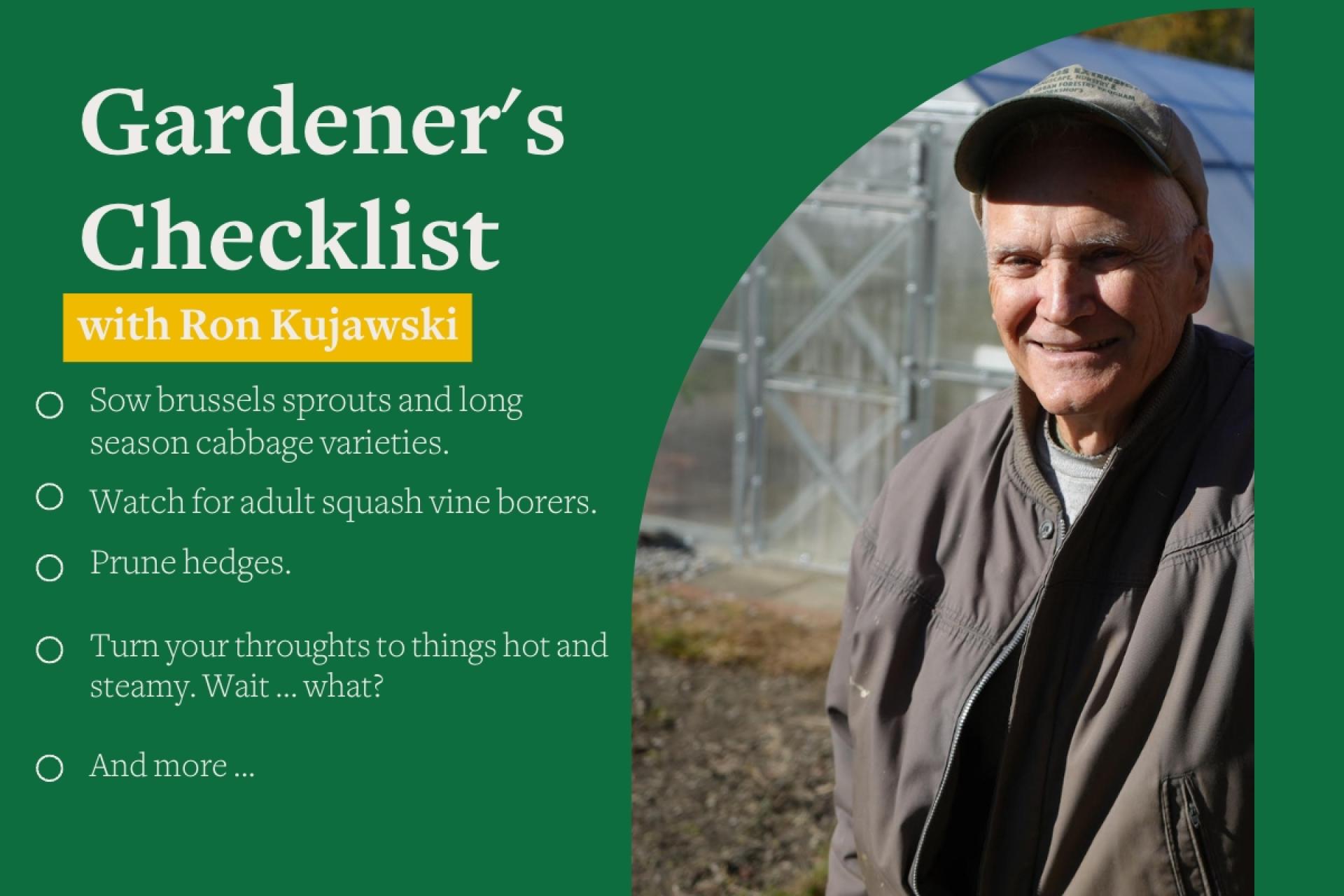You are here
Gardeners Checklist: Here Is What to Do in This Fourth Week of June
Gardeners Checklist: Here Is What to Do in This Fourth Week of June
By Ron Kujawski
• Sow seeds of Brussels sprouts and long season cabbage varieties. Start these in flats or in a seed bed right in the garden. Transplant the seedlings in mid-summer. They’ll be ready to harvest in mid-October or later. Late, long season cabbage varieties typically develop very large heads and are great for making sauerkraut. Bring on the bratwurst!
• Watch for adult squash vine borers as you work in the garden. The adult is a moth and has an orange body with metallic-green wings; it resembles a large wasp. Unlike other moths, squash vine borer moths fly about during the day. When you see them, place a row cover over the squash plants to keep the moths from laying their eggs. There is one problem with this method. Squash are bee pollinated. Row covers will have to be removed when plants are in flower or the flowers will have to be hand-pollinated.
• Prune hedges to encourage dense growth. A key to pruning hedges is to trim the top so that it is narrower than the bottom. Otherwise, branches at the bottom will be shaded and will drop their leaves.
• Tidy up your houseplants. Use hand pruners or scissors to trim yellow or brown leaves from houseplants. Check plants to see if they need re-potting. That could be why leaves are yellowing or browning.
With the arrival of summer, my thoughts turn to things hot and steamy. Yes, that’s right; I’m thinking about sterilization via solarization.
“OK, Garden Guy; you’ve lost me. What are you talking about?”
I’m talking about sterilizing soil. I use a lot of compost in my potting mixes. Unfortunately, my compost contains a lot of weed seed. I’d like to kill those seeds without using herbicides or stinking up the house by sterilizing soil in the oven. Since summer is typically sunny and hot, why not let the sun do the work? My plan is to place the potting soil mix in clear plastic bags. The soil is moistened and then the bags are sealed. The bags will be placed on a hard, flat surface in full sun and flattened so that the thickness of soil is only an inch or two. The theory is that the sun will heat up the soil mix and kill the weed seeds and perhaps any disease-causing bacteria and fungi. A soil thermometer can be poked through the bag to monitor the temperature within. Most weed seeds and many bacteria and fungi will be killed when soil temperature reaches 140 degrees F. If no soil thermometer is available, I recommend leaving the soil in the bags for 8 to 10 weeks. Solarization may not kill all the weed seeds but I had success killing most weeds in field trials several years ago.
Ron Kujawski began gardening at an early age on his family's onion farm in upstate New York. Although now retired, he spent most of his career teaching at the UMass Extension Service. He serves on Berkshire Botanical Garden’s Horticulture Advisory Committee. His book, Week-by-Week Vegetable Gardener’s Handbook, is available here.
Help Our Garden Grow!
Your donation helps us to educate and inspire visitors of all ages on the art and science of gardening and the preservation of our environment.
All Donations are 100 percent tax deductible.



